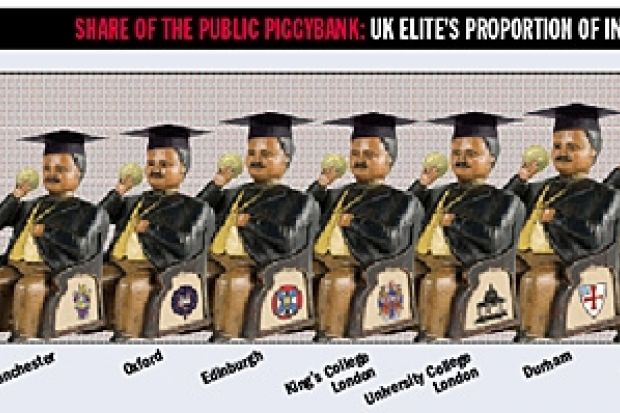As government austerity measures increasingly encourage UK universities to diversify their income streams, analysis by Times Higher Education shows that institutions already vary greatly in the proportion of income they secure directly from public sources.
Of the top 10 UK institutions according to the THE World University Rankings 2012-13, the London School of Economics ran on the lowest proportion of public money in 2010-11 - just 16.1 per cent of its annual £234 million income.
The University of Bristol relied the most heavily on public sources, with 44.7 per cent of its budget coming from the public purse.
Such income sources are funding council grants for teaching and research, plus research income from the UK research councils, government bodies and health authorities.
The LSE was notable for the proportion of its budget that came from international student fees - which, at £70.7 million, was more than twice its revenue from home and European Union students.
The University of Cambridge had the second-lowest proportion of funding from public sources in an overall budget of £1.25 billion, more than five times the LSE's total income.
Sources: Higher Education Funding Council for England recurrent grant 2010-11, Scottish Funding Council general fund for universities in support of teaching and research for academic year 2010-11, Horizon Fund for universities, university annual reports and financial statements 2010-11 and Cambridge Facts and Figures January 2012.
Note: The University of Bristol's figure for research income from government departments and health authorities was unavailable. The graphic uses an estimate based on the group average for research income of this kind, scaled to Bristol's income compared with the group average.
